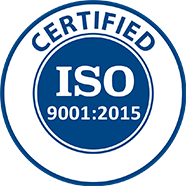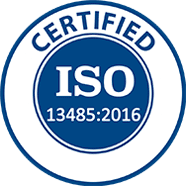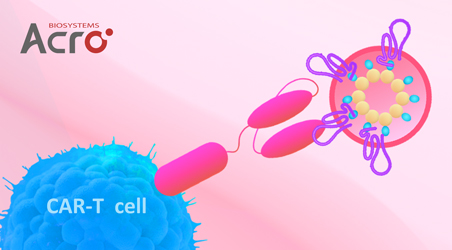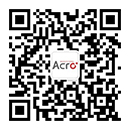胸腺基质淋巴细胞生成素(Thymic stromal lymphopoietin, TSLP)是一种多效细胞因子,可作用于多个细胞系,包括树突状细胞、T细胞、B细胞、中性粒细胞、肥大细胞、嗜酸性粒细胞和固有淋巴细胞,影响它们的成熟、存活和招募,它以促进2型免疫反应而闻名,特别是在过敏性疾病中的作用。2021年,第一款针对TSLP的单克隆抗体(Tezepelumab)获得批准,用于治疗严重哮喘。
在肺部、皮肤和消化道中,上皮细胞和基质细胞是产生TSLP的主要来源(图1),此外,毛囊也能产生TSLP,与IL-7一起,TSLP有助于调节皮肤内固有淋巴细胞ILC2的存留,通过控制皮脂腺功能调节皮肤微生物群。而上皮细胞产生的TSLP可以受到许多刺激的诱导,包括机械损伤、TLR3、TLR2和NOD2的配体、寄生虫感染、促炎性细胞因子、胰蛋白酶以及木瓜蛋白酶等蛋白酶。在感染病毒后,如呼吸道合胞病毒(RSV)、鼻病毒、流感病毒和淋巴细胞性脑膜炎病毒,也会触发肺部的TSLP产生。TSLP充当警报信号,迅速从细胞中释放出来,并激发进一步的外源性和内源性危险信号,加剧炎症。
TSLP的产生受到促炎性Th2型细胞因子IL-4和IL-13以及肿瘤坏死因子(TNF)、IL-1β和IL-25的正调节,其中TNF与Th2型细胞因子协同作用,增加TSLP的产生。而干扰素-γ(IFNγ)和IL-17则可以抑制TSLP的释放;β2-肾上腺素受体激动剂和糖皮质激素也抑制TSLP的释放,并协同抑制多聚(I:C)诱导的TSLP释放;也有研究显示,在组织损伤的情况下,来自巨噬细胞的前粒细胞蛋白促进TSLP的产生,导致小鼠气道上皮细胞的过敏性炎症。
TSLP释放的产生与作用示意
For each experiment, a standard curve needs to be set for each microplate, and the specific OD value may vary depending on different laboratories, testers, or equipment. The following example data is for reference only. The sample concentration was calculated based on the results of the standard curve.The minimum detectable concentration of TSLP is less than 31.25 pg/mL.
Ten replicates of each of 4 samples containing different TSLP concentrations were tested in one assay. Acceptable criteria: CV<10%.
Five samples containing different concentrations of TSLP were tested in independent assays. Acceptable criteria: CV<15%.
Recombinant TSLP was spiked into 3 human serum samples, and then analyzed. The average recovery of TSLP for serum samples is 91.5%.
参考文献
1.Sims, J. E. et al. Molecular cloning and biological characterization of a novel murine lymphoid growth factor. J. Exp. Med. 192, 671–680 (2000).
2.Soumelis, V. et al. Human epithelial cells trigger dendritic cell mediated allergic inflammation by producing TSLP. Nat. Immunol. 3, 673–680 (2002). This study demonstrates that human epithelial cells produce TSLP and that it acts on DCs, with high expression of human TSLP in AD.
3.Rochman, I., Watanabe, N., Arima, K., Liu, Y. J. & Leonard, W. J. Cutting edge: direct action of thymic stromal lymphopoietin on activated human CD4+ T cells. J. Immunol. 178, 6720–6724 (2007). The first demonstration of a direct effect of TSLP on human T cells, with TSLPR expression increased on activated CD4+ T cells.
4.West, E. E. et al. A TSLP-complement axis mediates neutrophil killing of methicillin-resistant Staphylococcus aureus. Sci. Immunol. 1, eaaf8471 (2016). This study demonstrates that TSLP can promote the killing of methicillin-resistant S. aureus.
5.Kobayashi, T. et al. Homeostatic control of sebaceous glands by innate lymphoid cells regulates commensal bacteria equilibrium. Cell 176, 982–997.e16 (2019). This study demonstrates a role for TSLP in the persistence of ILCs within skin and its control of sebaceous gland function to maintain the microbiota.
6.Kato, A., Favoreto, S. Jr, Avila, P. C. & Schleimer, R. P. TLR3- and Th2 cytokine-dependent production of thymic stromal lymphopoietin in human airway epithelial cells. J. Immunol. 179, 1080–1087 (2007).
7. Lee, H. C. et al. Thymic stromal lymphopoietin is induced by respiratory syncytial virus-infected airway epithelial cells and promotes a type 2 response to infection. J. Allergy Clin. Immunol. 130, 1187–1196. e5 (2012).



























 Star Ribbon预染蛋白Marker蛋白质标记物是生物研究和药物开发的重要组成部分。无论是用于蛋白质电泳还是western blot,我们的预染色蛋白质标记物帮助您快速确定目标蛋白质的分子量或评估转移效率。Fc受体蛋白治疗性抗体的功效取决于Fab片段及其对目标抗原的结合活性,还取决于Fc片段及其与关键Fc受体的相互作用。因此,在抗体工程中候选物必须针对一系列受体进行测试。探索我们的重组Fc受体蛋白质的全面收藏!
Star Ribbon预染蛋白Marker蛋白质标记物是生物研究和药物开发的重要组成部分。无论是用于蛋白质电泳还是western blot,我们的预染色蛋白质标记物帮助您快速确定目标蛋白质的分子量或评估转移效率。Fc受体蛋白治疗性抗体的功效取决于Fab片段及其对目标抗原的结合活性,还取决于Fc片段及其与关键Fc受体的相互作用。因此,在抗体工程中候选物必须针对一系列受体进行测试。探索我们的重组Fc受体蛋白质的全面收藏!


























 膜杰作
膜杰作 Star Staining
Star Staining



























